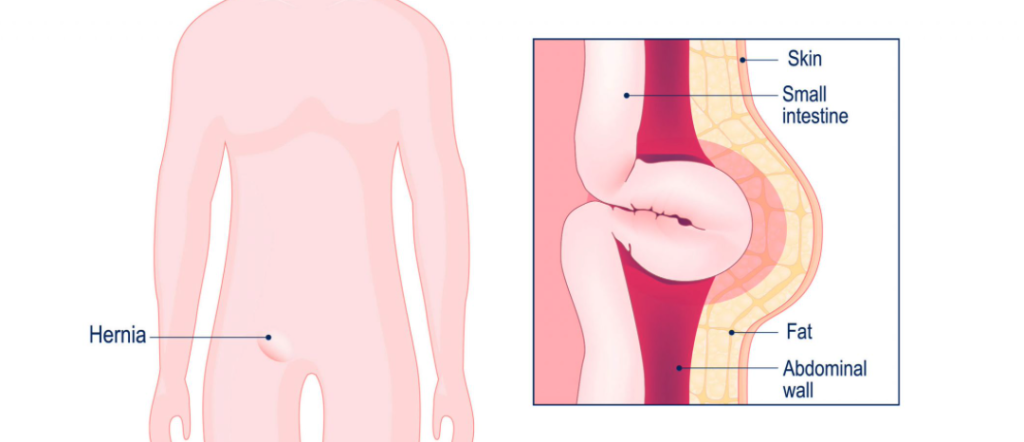Inguinal Hernia
A hernia is an area in a weak or torn layer of tissue.
Often when there is a hernia, other tissues bulge or
protrude from the weak or torn spot.

What is hernia?
Hernias can be in different parts of the body. When they occur where the thigh and body meet (called the groin), they are called an inguinal or femoral hernia. Inguinal hernias are more common. Both types of hernias can swell and form a sac. In some cases, a loop of intestine or a piece of fat stuck in the pouch may enter.
What are the symptoms of inguinal hernia?
Inguinal hernias do not always cause symptoms.
But when symptoms do occur, they can include:
1
A feeling of heaviness or pulling in the groin area
2
Dull pain that worsens when contracting your stomach, pain when lifting weights, coughing
3
A bulge or lump in the groin
It can be very painful and even dangerous if the tissue inside the hernia becomes compressed and cannot be sent into the abdomen. When this happens, the tissue cannot receive enough blood, so it can become damaged or tissue necrosis (rot) may occur. This is more likely in femoral hernias than inguinal hernias.
Should I see a doctor or nurse?
Yeah. See a doctor or nurse if:
- Feel or see a bulge in your groin
- If you feel a pulling sensation or pain in your groin even if you don’t have a groin
In most cases, doctors can diagnose a hernia simply by performing a palpation.
Often times, the contents of the hernia can be “reduced” or slightly pushed back into the abdomen. However, there may be cases where the hernia becomes stuck and cannot be pushed back. In these cases, emergency intervention may be required.
If you experience pain or feel sick around the swelling, call your doctor or surgeon right away.
Patient Stories
Our patients share their treatment experiences
